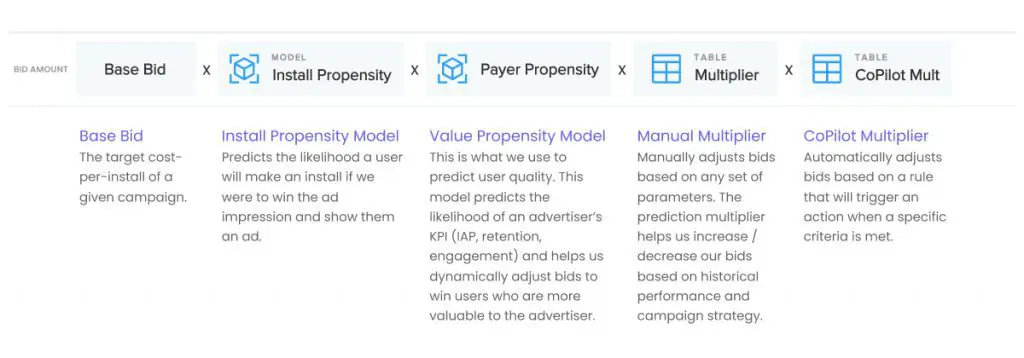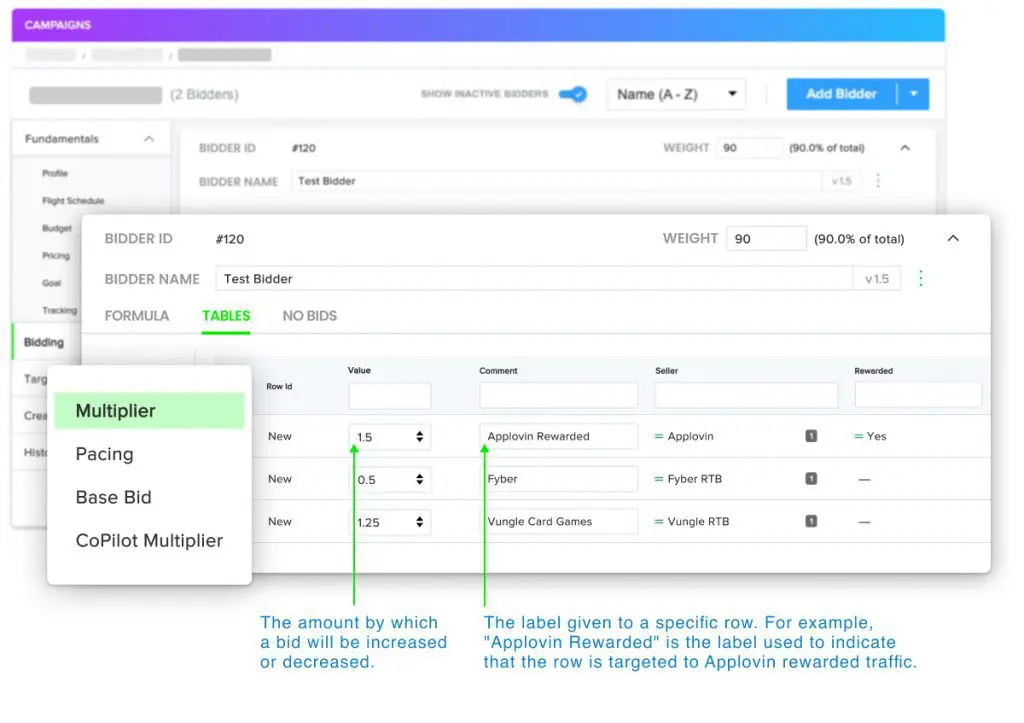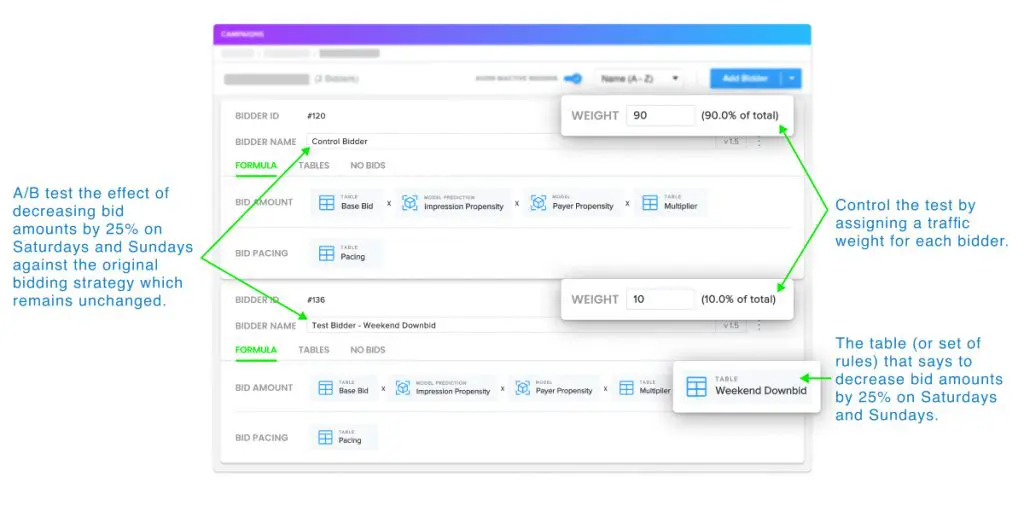Programmatic advertising has come a long way since the early days of “black box” programmatic buying. For some time now, “granular reporting” like the cost and environment in which programmatic ads are shown has been table stakes for mobile marketers. But today, with economic headwinds and data privacy enhancements profoundly shifting the marketplace, advertisers should also understand and have access to the bidding strategies that control their campaigns’ bidding decisions.
Below, learn why bidding transparency is key to cost-effective mobile advertising in 2023 and beyond.
What is transparency in mobile programmatic advertising?
At LifeStreet, when we refer to ‘transparency,’ we mean full visibility into the decisions that drive programmatic performance. While it’s important to understand a campaign at all levels — from targeting parameters to reporting — we believe transparency into what drives bidding decisions is especially critical. This includes which impressions are won, how much was bid, and the ability to A/B test and see the impact optimization changes will have on a campaign. By understanding why and how certain decisions help maximize ROAS, marketers can make better data-driven optimizations to drive greater performance.
The way LifeStreet provides insight into the decisions that drive programmatic performance is through bidding and testing transparency. We give our advertising partners full visibility of the elements that make up their campaigns’ bidding strategies and the tools to A/B test an infinite number of bidding strategies. From a centralized portal, advertisers can easily test and compare the performance of different bidding strategies against each other.
What is a bidding strategy?
In programmatic advertising, a bidding strategy is a combination of elements used by a DSP to determine how much an advertiser bids on an impression opportunity. Bidding decisions are what govern which impressions a DSP wins and how much they are willing to pay for them.
How likely is a user to install an app if we show them this ad? How likely is a user to continue using the app for at least 7 days? How likely is a user to make an In-App Purchase (IAP)? To answer these questions, we combine predictions (the likelihood of an event happening) with manual bid adjustments to create bidding strategies which are expressed in a bidding formula.

Another way to think of a bidding strategy is as a set of rules that control different functions of a formula. At LifeStreet, we use four types of tables to set rules in a variety of ways:
- Base Bid table: Sets the base bid in a formula as the bid amount to launch a campaign. This amount can be adjusted as needed based on performance.
- Multiplier table: Increases or decreases the amount of a bid of any specified dimension (e.g., day of week, device type, country, ad size, etc.). We can include many dimensions in one table and can also add any number of multiplier tables to one bidding formula.
- Pacing table: Controls the amount of traffic to bid on from 0% (no traffic) to 100% (all traffic). This can also be targeted along ~50 different dimensions.
- CoPilot table: An automatic, rule-based bid adjustment for any set of dimensions (e.g., always bid 25% above baseline if ROAS is greater than 100%).

While advertisers who work with self-serve DSPs often have full visibility of a campaign’s bidding strategies, at LifeStreet, we believe that to remain in control of their ad spend, all advertisers should have the same level of transparency as their account manager.
How LifeStreet is expanding the definition of transparency for all advertisers
In today’s programmatic marketplace, bidding technology has reached new heights. Marketers can use their first-party data to work with DSPs to build custom bidding models. But at LifeStreet we’ve taken transparency one step further with a set of new bidding tools in our Nero platform.
From a single UI, marketers can set-up and test an infinite number of bidding strategies against one another and control the percentage of the traffic on which they test new strategies. The ability to evaluate bid changes on small portions of campaign traffic limits wasted ad spend. The alternative — changing bids on 100% of traffic for an entire live campaign — could hurt campaign performance, or worse, result in a negative ROAS.
For example, if a client’s campaign is consistently underperforming on weekends, LifeStreet can test the effect of decreasing bid amounts by 25% on Saturdays and Sundays. This weekend bidding strategy can be tested on just 10% of traffic before applying it to the entire campaign which limits the risk of applying changes to an entire campaign and providing an environment that allows advertisers to continuously innovate different bidding strategies that drive long-term success.

Another use case for Nero’s A/B testing feature is the ability to test new models on particular pockets of inventory. For example, it is standard practice to exclude apps and app categories that yield negative ROAS from a campaign. But, a model’s predictive power can increase due to changes in the digital environment. Therefore, it should not be assumed that apps that performed poorly once, will always perform poorly.
Each time a new model is built, advertisers can safely test the possibility that this new model, as part of a new bidding strategy, can find the right users across previously blocked inventory. If an A/B test reveals that some of the previously excluded apps and categories are generating positive ROAS, then re-introducing these previously excluded but now high-performing apps could improve ROAS and help a campaign scale across new inventory sources.
Programmatic bidding transparency is the future
At LifeStreet, we believe all advertisers should have full transparency of their programmatic campaigns — not just those working with self-serve DSPs. With this goal in mind, we built and launched our Nero platform in 2022. From a single, centralized dashboard, Nero allows marketers to quickly test variables that might impact a programmatic buy (e.g., cost, budget or KPI) and predict the likely outcome of different bidding strategies on campaign performance.
Whether an advertiser is looking for a self-serve, hybrid or managed service approach, Nero is built to fit their needs. For hybrid advertisers, Nero lets them pick and choose which parts of their campaign they want to control and which they prefer LifeStreet to manage for them. For self-serve advertisers, the Nero UI provides full visibility, reporting and control. For advertisers looking for a managed service solution, Nero’s simple and easy-to-navigate dashboard gives additional insight into their campaigns’ performance alongside the guidance provided by LifeStreet’s Customer Success Team. Regardless of the level of control an advertiser chooses, with Nero, all marketers have the same level of visibility as their LifeStreet campaign manager.
No longer is a simple understanding of the ad supply you want to buy enough in today’s programmatic marketplace. Today, mobile advertisers should understand not only what they’re bidding on but how. For marketers who want to acquire high-value, long-term users, working with a DSP that provides full visibility of their programmatic buys is critical.
